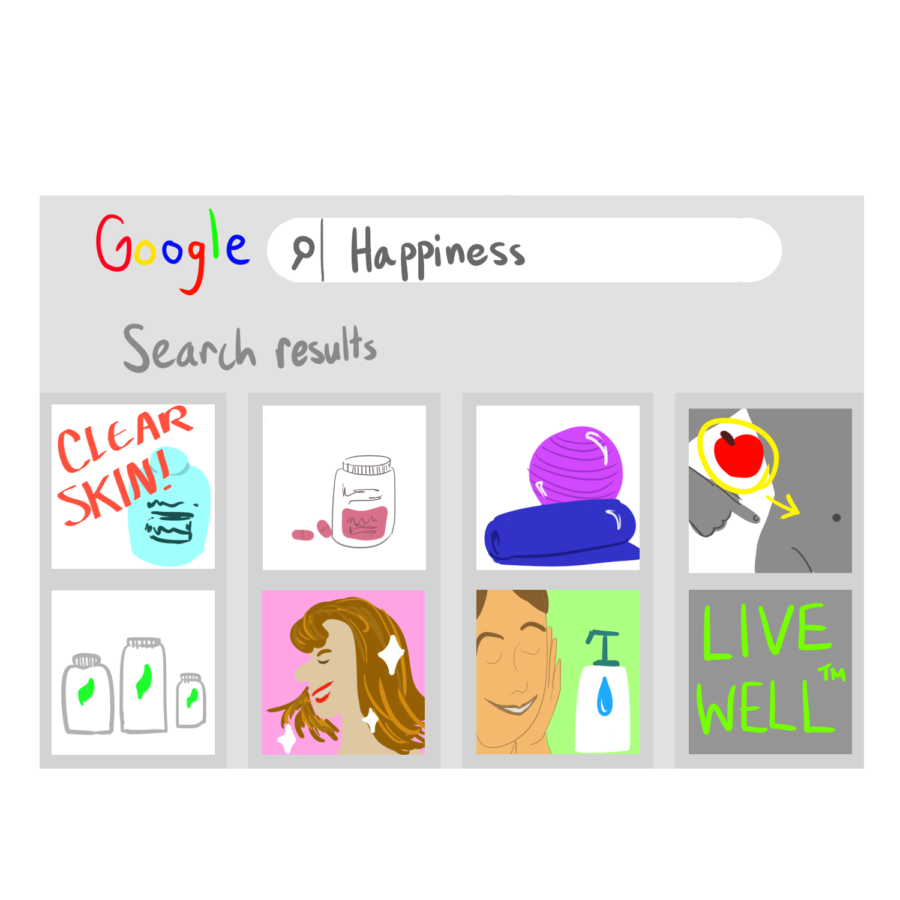Putting a price on happiness: The cost of wellness culture
From juice cleanses and pricey skincare to retreats and diets, wellness culture has transformed the way we view ourselves and our health, and not necessarily for the better. Influencers and companies sell us on their idea of “health” and tell us that it will make us happy, so we gravitate towards the trendy and the new rather than what is actually beneficial.
At the root of toxic wellness culture is the idea that if we are physically and mentally well, we will be more productive. Feeling sadness or not taking care of your body is, according to those at the forefront of the wellness culture movement, antithetical to success. Buy into these products, they say, and your outlook on life will change. Buy into happiness, and you will reach your full potential.
Constantly encouraging happiness can often be more detrimental than beneficial, anyway. Toxic positivity means always focusing on the bright side and avoiding feeling or expressing any negative emotions, which leads to more trouble down the road. It can ultimately cause isolation, lower self-esteem and minimize others or your own troubles in a way that puts everyone involved at risk for worse emotional and physical outcomes. Wellness culture’s focus on constant happiness as the end-all-be-all is neither a realistic nor a healthy goal.
Despite this, taking time to care for your mind and body is not inherently bad. It is something we all should strive for, but also something that is difficult to do in a society that prioritizes productivity such as our own. Wellness culture, however, tries to commodify our health and often does so by isolating anyone that does not fit into their mold of what a “healthy” person should look like.
The image of wellness that is sold to us is representative of a very specific demographic. Health is often synonymous with skinniness, clear skin and wealth. Companies that thrive off wellness culture use models that fit this archetype and then claim that wellness engenders happiness. This marketing only serves to reinforce a status quo that places the young, rich and conventionally attractive at the top and everyone else at the bottom. The best way to be well? Be a young, thin white woman.
This is especially ironic considering that most of wellness culture actually does not come from white culture at all. “Golden milk” lattes, crystals, holistic medicine and yoga all come from “non-western” societies such as South and East Asian or Indigenous cultures. In fact, a lot of these methods of maintaining wellness, until the last ten or so years, often were looked down upon by white society for being uncivilized in the face of modern Western medicine. Now, these same techniques make up most of wellness culture, with white women at the forefront of it all.
Centering white women in wellness culture effectively sends a message that health and happiness are exclusive to a specific group and impossible to achieve naturally. This message drives us to buy supplements, pay for SoulCycle classes and commit fully to the idea that if we spend enough, we too can be the paragon of health and happiness. Wellness becomes this thing that people are trying to achieve, something that can only be achieved by buying more and more into it. Something that is only accomplished if you look a certain way or own certain products. This is not true.
However, many of the practices wellness culture espouses are good for you at their roots. Exercise, taking time for yourself and eating well do help you become physically and mentally healthier, but you do not need a $100 gym membership or a $70 face mask to be healthy. Finding what works for you and what brings you peace in the midst of a busy and demanding society is the best way to maintain your own health. Wellness should first and foremost center you and your health, and it is important to remember that before buying into the latest trends.

My name is Ashwini Vivek (she/her) and I am an Opinion Writer for the Trinitonian! I am a senior Neuroscience major from Dallas, and I'm also involved...



